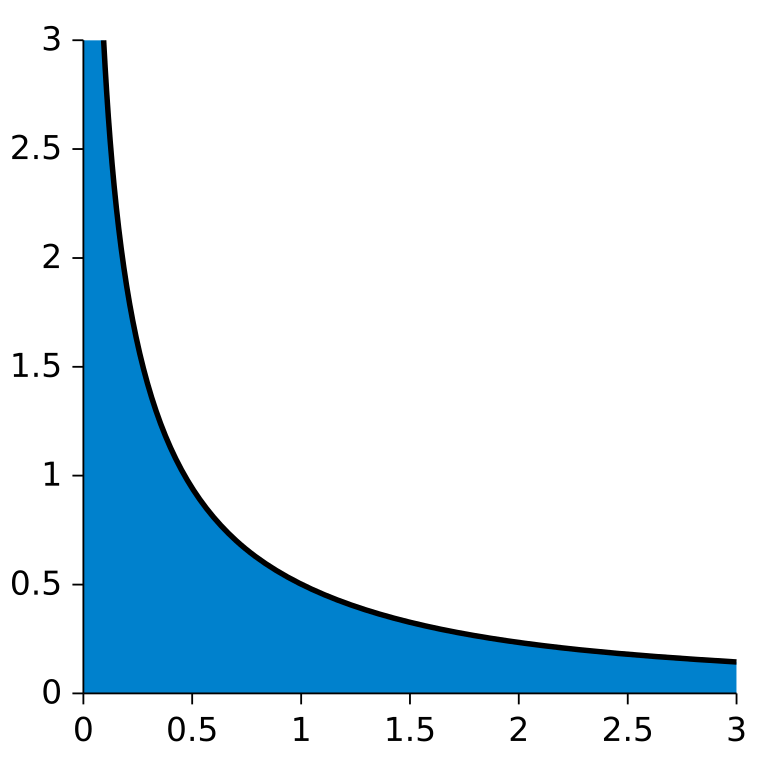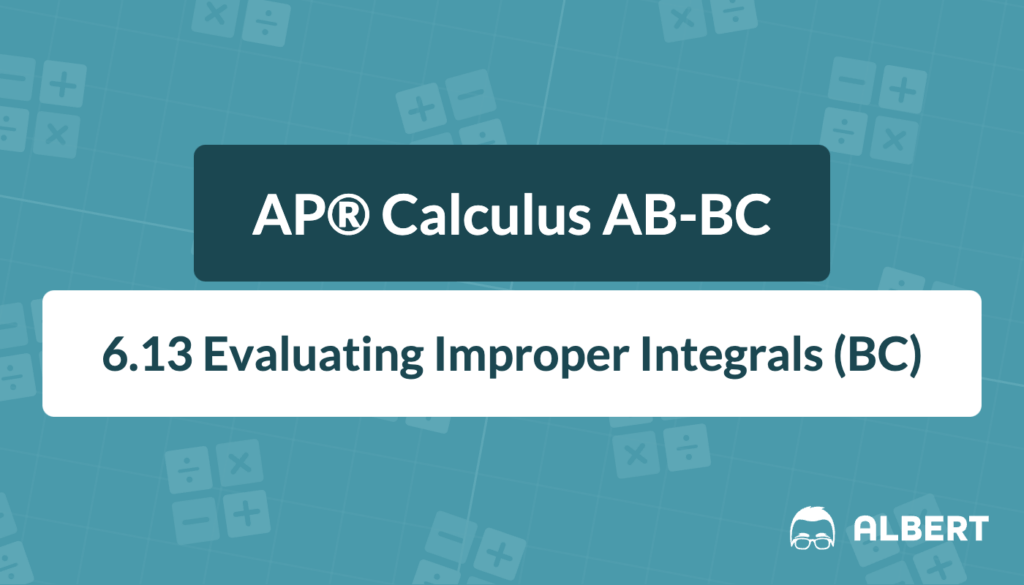What We Review
Understanding integrals is a central part of advanced calculus. In many problems, the interval of integration might be finite, and the function itself remains well-behaved. However, sometimes the integral stretches to infinity or contains a point where the function is not defined. Those situations lead to what is known as an improper integral. This concept is essential for success in AP® Calculus AB-BC, especially when analyzing real-world models that require limits over large domains.
Below is a clear overview of improper integrals. Along the way, there are examples that will walk step by step through evaluation techniques. This discussion also addresses “what is an improper integral,” two main types, a comparison test for improper integrals, and the direct comparison test for improper integrals. Trying different methods will improve understanding and guide future improper integrals practice.
Introduction to Improper Integrals
Standard integrals typically involve definite integrals with finite limits and no discontinuities. However, an integral is called “improper” if:
- It has an infinite boundary, such as \infty or -\infty.
- Its integrand becomes unbounded within the integration interval.
Improper integrals show up often in calculus. Recognizing them is crucial for the AP® Calculus AB-BC test because many theoretical and real-world applications measure areas or values over very large ranges. Therefore, mastering these techniques helps solve problems in physics, probability, and other areas that go beyond typical finite intervals.
Defining Improper Integrals
To answer the question “what is an improper integral” in a formal sense, it is an integral that requires limits due to its infinite range or unbounded function behavior. When faced with these issues, the integral is redefined using limits. If the limit exists and yields a finite result, the improper integral converges. Otherwise, it diverges.
Below is a visual of what an improper integral may look like when trying to find the area under a curve that never quite touches the x-axis.

Example (Step-by-Step)
- Consider the integral \int_{1}^{\infty} \frac{1}{x^2} dx.
- Rewrite as a limit: \int_{1}^{\infty} \frac{1}{x^2} dx = \lim_{b \to \infty} \int_{1}^{b} \frac{1}{x^2} dx.
- Evaluate \int_{1}^{b} \frac{1}{x^2} dx: \int_{1}^{b} \frac{1}{x^2} dx = \left[ -\frac{1}{x} \right]_{1}^{b} = -\frac{1}{b} + 1.
- Take the limit as b \to \infty: \lim_{b \to \infty} \left(-\frac{1}{b} + 1\right) = 1.
- Since the result is finite, the integral converges (to 1).
Two Types of Improper Integrals
Improper integrals often fall into two categories. Each type has its own approach for rewriting the integral as a limit.
Type 1 Improper Integral (Infinite Interval)
A Type 1 improper integral extends to \infty or -\infty. Therefore, it cannot be evaluated in one piece. Instead, set up a limit that captures the behavior at the infinite boundary.
Example (Step-by-Step)
- Examine the integral \int_{2}^{\infty} \frac{1}{x} dx.
- Rewrite this integral using a variable limit, say b: \lim_{b \to \infty} \int_{2}^{b} \frac{1}{x} dx.
- Calculate \int_{2}^{b} \frac{1}{x} dx: \left[ \ln{x} \right]_{2}^{b} = \ln{b} - \ln{2}.
- Take the limit: \lim_{b \to \infty} (\ln{b} - \ln{2}).
- Since \ln{b} grows without bound, the limit diverges. Hence, the integral diverges.
Type 2 Improper Integral (Unbounded Integrand)
A Type 2 improper integral does not necessarily reach infinity. Instead, the function itself becomes unbounded somewhere within the interval. Consequently, the integral will split at the point where the integrand is undefined or infinite.
Example (Step-by-Step)
- Observe the integral \int_{0}^{1} \frac{1}{\sqrt{x}} dx. Note that the integrand has a problem at x=0.
- Split the integral at 0: \lim_{a \to 0^{+}} \int_{a}^{1} \frac{1}{\sqrt{x}} dx.
- Evaluate \int_{a}^{1} \frac{1}{\sqrt{x}} dx: \int_{a}^{1} x^{-\tfrac{1}{2}} dx = \left[ 2\sqrt{x} \right]_{a}^{1} = 2 - 2\sqrt{a}.
- Apply the limit as a \to 0^{+}: \lim_{a \to 0^{+}} (2 - 2\sqrt{a}) = 2.
- This finite result reveals that the integral converges to 2.
Comparison Test for Improper Integrals
Sometimes, it helps to use a comparison test for improper integrals. This involves comparing the given integral to a simpler one whose convergence or divergence is well-known. If the original integrand is smaller than a known convergent integrand, then the original must converge. If it is larger than a known divergent integrand, it must diverge.
Example (Step-by-Step)
- Consider evaluating \int_{1}^{\infty} \frac{2}{x^3+1} dx.
- Compare \frac{2}{x^3+1} with \frac{2}{x^3}, because \frac{2}{x^3} is easier to integrate and known to converge on [1,\infty].
- Notice that for x \ge 1, \frac{2}{x^3+1} \le \frac{2}{x^3}.
- Evaluate the simpler integral \int_{1}^{\infty} \frac{2}{x^3} dx: \int_{1}^{\infty} \frac{2}{x^3} dx = 2 \lim_{b \to \infty} \int_{1}^{b} x^{-3} dx = 2 \lim_{b \to \infty} \left[ -\tfrac{1}{2x^2} \right]_{1}^{b}.
- This integral converges to 1.
- By the direct comparison test for improper integrals, since \frac{2}{x^3+1} is always smaller than a function whose integral converges, the original integral also converges.
Improper Integrals Practice and Helpful Tips
Confidence grows with improper integrals practice. It is useful to:
- Identify which type of improper integral appears (Type 1 or Type 2).
- Immediately assess where the problem occurs (infinite limit or integrand blow-up).
- Use limit definitions and compare with known integrals when in doubt.
- Review limit techniques for tricky functions, because improper integrals often require careful limit evaluation.
Moreover, practicing across different intervals and focusing on both Type 1 and Type 2 improper integral situations helps build a stronger skill set. Therefore, make it a habit to break down each problem step by step, and always check if a comparison test for improper integrals might simplify the reasoning.
Quick Reference Chart
| Term or Concept | Definition or Explanation |
| Improper Integral | An integral with infinite bounds or an unbounded integrand. |
| Type 1 Improper Integral | Integral where one or both limits of integration become infinite. |
| Type 2 Improper Integral | Integral with an integrand that is unbounded within the interval. |
| Comparison Test for Improper Integrals | A method to test convergence/divergence by comparing to a known integral. |
| Direct Comparison Test for Improper Integrals | A specific comparison method that compares the integrand term by term. |
Conclusion
Improper integrals are a key part of AP® Calculus AB-BC, and answering “what is an improper integral” involves recognizing their infinite bounds or unbounded integrands. Both Type 1 and Type 2 categories rely on limits for evaluation. Additionally, the comparison test for improper integrals, including the direct comparison test for improper integrals, serves as a powerful tool when deciding whether these integrals converge or diverge.
Consistent improper integrals practice is highly encouraged. More exposure to different functions and intervals will build confidence. Understanding these techniques will also open doors to other areas of calculus, where recognizing infinite behaviors early can simplify more advanced problem-solving.
Sharpen Your Skills for AP® Calculus AB-BC
Are you preparing for the AP® Calculus exam? We’ve got you covered! Try our review articles designed to help you confidently tackle real-world math problems. You’ll find everything you need to succeed, from quick tips to detailed strategies. Start exploring now!
Need help preparing for your AP® Calculus AB-BC exam?
Albert has hundreds of AP® Calculus AB-BC practice questions, free responses, and an AP® Calculus AB-BC practice test to try out.








